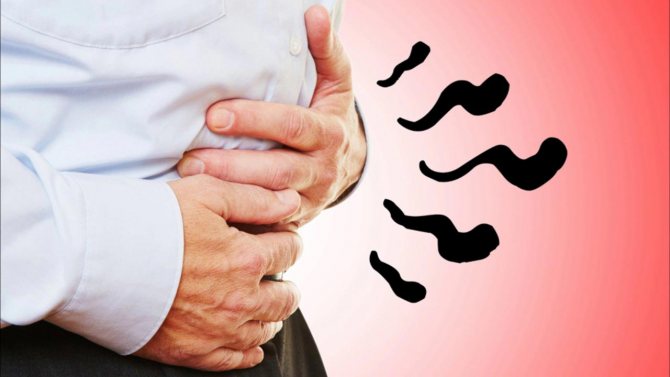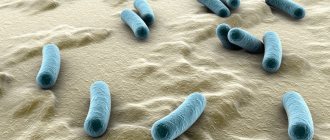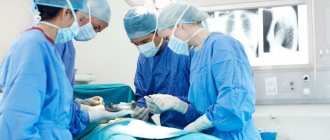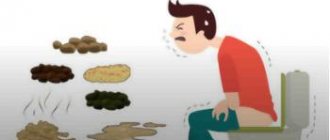Colon cleansing for weight loss: truth or myth?
Over the course of your life, does your gut actually accumulate waste, toxins, and hardened stool that, in addition to worsening your health, also increases your weight? How can you know how much unnecessary weight you are carrying in your colon? What if one colon cleanse could help you lose a significant amount of weight? It is these questions that we will try to answer in this article.
Cleansing your intestines for weight loss helps you get rid of those extra pounds, and even if you lose half of what has accumulated in your intestines over the years, it will still be noticeable progress. Moreover, the colon cleansing procedure will not take you more than an hour. This is exactly what manufacturers of specially designed colon cleansing products promise us.
While this article won't tell you how to find the best at-home colon cleanse for weight loss or any other goal, we will look at what the science says about it.
Symptoms of problems with the small intestine

The most common disease in this part of the digestive system is inflammation of the small intestine.
Most often, problems in this part of the intestine are signaled by the following symptoms:
- pain in the lower abdomen;
- constipation;
- pain during defecation;
- pain on palpation and compaction;
- diarrhea;
- colitis;
- dark color of stool, coming out in the form of tight balls;
- blood in stool;
- frequent nausea;
- pungent odor in stool.
You can read more about diseases of the small intestine in this article.
How does colon cleansing for weight loss work?
There are many ways to cleanse the colon, so you may see different names for this procedure, such as “colon irrigation”, “colon hydrotherapy”, or simply “colon cleansing” by one means or another.
Colon cleansing mainly targets the irritation of the inner lining of the intestines, which causes bowel contents to move rapidly, causing you to urgently need to visit the nearest toilet. Some aggressive bowel cleansing agents can cause unpleasant and even somewhat painful sensations that occur with diarrhea.
If you want to do a colon cleanse yourself, you can choose different cleansing methods, such as:
These remedies for cleansing the intestines of waste and toxins are taken orally or rectally (enemas).
Regardless of the remedy you choose, a colon cleanse will remove most of the feces, toxins, and waste from there fairly quickly. Once your colon empties, you will weigh less almost instantly.
You might argue that every time you go to the toilet, you weigh less than before you went to the toilet. This is true. A reasonable question arises: is bowel cleansing more effective for weight loss than just going to the toilet?
How much feces is in the intestines of an adult?
Defecation
(lat. defecatio; synonyms:
emptying the rectum
,
stool
,
bowel movement
) is the process of the body excreting feces from the digestive tract (in humans, from the rectum) through the anus.
A person normally has bowel movements about once a day (from one to two times a day to once every two days). Whether bowel movements occur more frequently (frequent bowel movements) or less often (constipation), this is usually accompanied by a change in the physical properties of the stool. Frequent stools usually have a thinner consistency (diarrhea), even watery.
When stool is retained, the feces become too rough and hard and can injure the mucous membrane. Cases of intestinal rupture due to hard fecal stones have been described, leading to peritonitis and resulting in death. As a rule, a violation of the frequency of bowel movements is a symptom of a disease and requires consultation with a doctor (gastroenterologist, proctologist or surgeon).
Involuntary bowel movements sometimes occur during childbirth.
Physiological parameters [edit | edit code]
Defecation in a healthy adult is characterized by the following physiological parameters:
- The threshold of rectal sensitivity (the minimum volume of feces required for the sensation of filling the intestines) is less than or equal to 25 ml;
- The minimum volume for relaxing the internal anal sphincter (the volume at which the first urge to defecate occurs) is 10-20 ml;
- The threshold for a constant urge to defecate (the volume required for the appearance of a constant urge) is less than or equal to 220 ml;
- The maximum tolerated volume is 110-280 ml.
The listed parameters are measured by anorectal manometry and their deviations from the norm are diagnostic signs. [1]
During and outside of bowel movements, an adult normally excretes 0.1 - 0.5 liters of gas from the intestines per day. During flatulence, the volume of gas released can reach three or more liters.
The composition of the gas mixture in healthy people is as follows: nitrogen N2 - 24-90%, carbon dioxide CO2 - 4.3-29%, oxygen O2 - 0.1-23%, hydrogen H2 - 0.6-47%, methane CH4 - 0-26%, as well as a small amount of hydrogen sulfide H2S, ammonia NH3, mercaptan [2], skatole.
Defecation in children [edit | edit code]
The urge to defecate occurs when feces move from the sigmoid colon to the ampulla of the rectum, but the act of defecation in humans is controlled by the central nervous system.
A healthy child is able to suppress the urge to defecate, starting from the age of one and a half to two years.
The child's normal stool types are the third and fourth types, determined by the Bristol stool scale, namely, in the form of a sausage with a ribbed surface or in the form of a smooth and soft sausage. [3]
Healthy children have the following age-dependent number of bowel movements per week:
- up to three months, breastfed - from 5 to 40;
- up to three months, those on artificial feeding - from 5 to 20;
- from 6 to 12 months - from 5 to 28;
- from one to three years - from 4 to 21;
- over four years old - from 3 to 14. [3]
The intestine is the largest organ in the complex human body. Thus, a complete colon occupies an area of 200 m² and reaches a length of 2 meters. The thin part of the suction organ of the gastrointestinal tract has a longer indicator of 8 meters.
The intestines carry out the process of absorbing nutrients that come from food. This organ also helps the body get rid of waste products.
Violation of the cleansing function entails dense blockage of the intestines and generates the development of various kinds of pathologies (including due to feces).
Causes of pathological intestinal disorders
The normal functioning of the absorptive organ of the gastrointestinal tract is influenced by a large number of factors, both external and internal. But where does the original source of the development of illnesses come from? Nikolai Amosov argued: “All human illnesses and misfortunes arise from poor nutrition.
We are what we eat." There is a great deal of truth in this expression. After all, preservatives, nitrates, pesticides and various heavy metals settle in the sections of the colon.
Excessive accumulation of these structural components affects the normal metabolism and functioning of cells and tissues. A person causes himself a lot of problems by eating on the go and chewing food poorly.
This can also include abuse of alcohol and various medications. The causes of slagged and clogged intestines are as follows:
- High calorie foods.
- Food that has been prepared through prolonged heat treatment (canned food, juices, casseroles).
- Insufficient amount of fluid in the human body.
- Weak motor activity (lying down lifestyle).
- Psychological disorders and stressful moments.
Source: https://tsitologiya.su/zheludok/skolko-kala-v-kishechnike-vzroslogo-cheloveka
How much weight can you actually lose with a colon cleanse?
A scientific study was conducted in which scientists investigated the effect of colon cleansing on weight loss. This study found that people lost an average of 1.2 kg as a result of the colon cleanse.
Another study compared different colon cleansing methods to see how effective different colon cleanses were. The most effective method of colon cleansing for weight loss allowed me to reduce weight by 3 kilograms, so do not believe if you are promised a quick weight loss of 15 - 20 kilograms.
Does colon cleansing benefit you and is it backed by science?
Chemical colon cleanses in medicine are typically used primarily to prepare people for surgical procedures. In fact, modern medicine knows nothing about the “accumulation of fecal debris” in the intestines, which sticks to the walls of the colon and is washed out thanks to cleansing procedures.
Modern medicine can detect tumors, cancer cells, broken bones, organ damage and countless other abnormalities in our bodies, but science still knows nothing about fecal debris in the intestines. So why should we believe that through cleansing we can significantly reduce our weight (up to 20 kilograms) of accumulated feces that may be present in our intestines?
If one of the best synthetic colon cleanses in modern medicine (which can only be prescribed by a doctor) can help us get rid of 3 kilograms of feces present in the intestines, then why should we believe that the widely advertised colon cleanses for weight loss can work 6 - 7 times better than this drug?
For the most part, colon cleansing is done with clean water anyway. So why pay for expensive drugs if you can use plain water?
As it turns out, no colorectal surgeon has observed anything even remotely resembling a thick layer of substance forming on the wall of the colon during surgery.
While there are purported beneficial effects of colon cleansing (including weight loss) that have yet to be scientifically proven, there are quite a few adverse side effects associated with colon cleansing (vomiting, bloating, cramping, kidney problems). failure and even death).
Intestinal anatomy
How many meters is the intestine of an adult? The organ is structurally divided into two main parts - the small and large intestine. The length of the first section can reach four meters. The small intestine is shorter in women than in men. It consists of three main departments:
This department is responsible for digesting food. It has a small diameter and thin walls. Moreover, this structure covers almost the entire lower space of the abdominal cavity and even partially the pelvis. The thin section is also responsible for moving feces further along the intestinal tract, hormonal secretion and strengthening the immune system. The overall work of the enzymes of the small intestine, gall bladder and pancreas ensures the breakdown of the food bolus into monocomponents.
The thick section can reach one and a half meters. Anatomically, it consists of the following parts:
After death, the length of the human intestine can reach eight meters. This is due to muscle relaxation. There are no villi on the mucous membrane of the large intestine. There is no active absorption of nutrients here.
This section of the intestine is necessary for the proper formation of feces. Here the absorption of water and the formation of feces from chyme occurs. Along the intestinal wall there is an accumulation of lymphoid tissue. She takes an active part in the processes of the immune system.
The final verdict on colon cleansing for weight loss
In the absence of any evidence, we are forced to conclude that colon cleansing for weight loss does not actually work.
When cleansing the intestines with a serious medical drug, you can reduce your weight to a maximum of 3 kilograms, but this actually means that all the feces present in the intestines have been removed from it.
Once you start eating food, your intestines will be filled again. After a few main meals, your weight will simply return to normal again. By and large, this is a waste of time and money when it comes to purchasing special medications, and even some unjustified health risks, without any scientific evidence of the benefits of this “event.”
Colon cleansing for weight loss is just one of many examples where seemingly great weight loss results can be completely deceptive.
Was this article helpful to you? Share it with others!
The length of the intestine in an adult is 12 meters | Diagnosis and treatment
The intestine is a vital organ and is large in size. The general condition of a person depends on his work. Many believe that it is formed only from the small and large intestines, although it has many more sections that perform separate functions and have Luberkühn’s crypts in the mucous membrane.
The human intestine has a unique microflora, due to the activity of which the digestive organs function safely. Microorganisms that enter inside are filtered through it. With the slightest infection, the microflora begins to die, which provokes diseases of the gastrointestinal tract.
Therefore, it is important to know the main points from the anatomy of the intestinal environment, as well as intestinal motility.
Knowledge of the anatomy of the intestine gives an advantage in case of unforeseen situations or at the first symptoms of pain.
Parts of the human intestine
There are differences in the structure and functions of parts of the gastrointestinal tract. The abdominal cavity contains the largest sections - the stomach and intestines. The liver and pancreas are also located here. The intestine consists of a large intestine 1.5–2 m long and a small intestine 5 to 7 m long.
The differences between the main sections of the gastrointestinal tract are shown in the diagram of the location of the abdominal organs (rear view). The small intestine in women is slightly narrower and shorter than the same organ in men. The walls of the small intestine are more pinkish in color, the color of the large intestine is pink-gray.
The glands, which are densely dotted with the mucous membrane of the small intestine, secrete enzymes for digesting food components. A large number of villi—microscopic folds of the wall—are facing inside the cavity of the tube. Thanks to this feature, the surface area increases many times over. Capillaries pass inside the villi, and epithelial tissue cells are located outside.
Important! Blood from the intestines enters the liver, where toxins and rotting products can be neutralized, and nutrients are sent for further “processing”.
The large intestine forms folds. This structural feature helps to reduce the occupied volume, without compromising the absorption surface of the organ. This department receives mostly undecomposed food debris, which releases water and electrolytes.
Intestines - what is it?
The intestine is designed in such a way that it is one of the largest organs in the human body, the largest section in the gastrointestinal tract, through which products pass and are digested all the time. It is located in the abdominal cavity and is of great importance.
It is in the intestines that food is digested and absorbed thanks to the villi, and certain types of hormones are produced.
Special villi are located on the inner layers of the intestines, where a mass of various vitamins are ultimately broken down and carbohydrates and fats are processed. In addition, there are up to 7 crypts per villi.
Also important is the normal mobility of the muscles of the organ, which promotes the movement of food in the intestinal tract.
In addition, the organ occupies an important place in the functioning of the immune system. Lactobacilli and bifidobacteria settle here and fight infections. The size of the organ can reach from 4 to 8 meters, but despite its size, this section of the gastrointestinal tract must be protected and carefully monitored for health, because everything in the body is interconnected, and most of the products pass through the intestines.
In addition, there are fungal spores in the intestines. In the normal state of the digestive tract, there are very few of them. But if the patient leads an incorrect lifestyle, the number of spores increases.
Malfunctions in the digestive tract can also affect other organs, and the person will be very sick and have a low-grade fever. In addition, aging will occur faster.
The intestine is enriched with arteries. An important point in the anatomy of the intestine is the blood supply to the organ, which travels a long way.
This process involves three main branches of the blood aorta in the abdominal part: the superior, inferior mesenteric artery and the celiac trunk. Because of them, a complete blood supply to the entire organ is realized.
The jejunal and ileal arteries, which are branches of the superior mesenteric artery and do not have septa, are responsible for the jejunum and ileum.
Small intestine
This section of the gastrointestinal tract got its name due to its small diameter, which varies from 2.5 to 6 cm. The structure of the walls differs between the mucous membrane and the submucosa, the muscular layer, and the outer serous membrane. It can be compared with the width of the lumen of the colon - from 6 to 10 cm. If the structure of the intestine is presented in good quality pictures, then the differences are better visible.
In addition to its own glands located in the wall of the department, ducts open into its lumen through which pancreatic juice and bile flow. Anatomically, the size of the duodenum is small (finger is the ancient name for a finger). However, this department is very important for changing food.
- Pancreatic juice entering the duodenum is necessary for the digestion of carbohydrates, proteins and lipids. The composition of the juice is greatly influenced by the type of food eaten. Thus, when consuming large amounts of fat, the lipase content is higher. If proteins predominate, then the concentration of enzymes that break them down is higher.
- Lipase, which breaks down fats, is activated in the presence of bile. It “breaks” fats into tiny droplets, making them more accessible to enzymes. Trypsin and chymotrypsin are involved in the decomposition of protein molecules.
- The absorption of amino acids, simple sugars, and vitamins begins in the walls of the duodenum. The transition of molecules from food to lymph and blood continues in the jejunum. The length of this section is 0.9–2 m. The walls are relatively thick and well supplied with blood.
Features of the location of the jejunum in the abdominal cavity: located on the upper left side of the abdomen. The ileum, 2.5 to 3.5 m long, is located in the right lower abdominal cavity.
What symptoms may indicate the presence of intestinal diseases?
Statistics say that the main part of all pathological processes in the gastrointestinal tract is associated with the intestines. But doctors have something to please: many intestinal diseases have been well studied and can be cured. Nowadays, such “mysterious” diagnoses as dysbiosis and IBS (irritable bowel syndrome) are increasingly being made. The attitude of medicine towards these diseases is ambiguous, and treatment methods are controversial.
In this article we list the most commonly diagnosed intestinal diseases, symptoms and signs of the disease in each specific case.
Intestinal diseases: some anatomy and statistics
To begin with, we will briefly talk about the structure and function of the intestines, and also provide information on epidemiology.
The intestine is represented by two sections: thick and thin. The small intestine, consisting of the duodenum, jejunum and ileum, originates from the pylorus of the stomach and ends at the ileocecal valve. The latter connects the small intestine to the large intestine. The large intestine also has three sections: the cecum, colon and rectum. In the wall of the duodenum (in its submucosa) there are glands whose functions are the secretion of digestive enzymes, hormones, and mucus. The intestines perform vital functions: breaking down food into digestible elements, absorbing nutrients into the blood, removing toxins from the body.
Numerous factors play a role in the occurrence and development of intestinal diseases:
- heredity;
- the presence of other diseases of the digestive system (gastritis, pancreatitis);
- intestinal infections;
- taking certain medications (for example, prolonged and uncontrolled antibacterial therapy can disrupt the composition of the microflora);
- dietary errors (abuse of fatty, fried foods, processed foods, lack of fiber in the diet, etc.);
- lack of vitamins and microelements;
- bad habits;
- excess body weight;
- physical inactivity;
- stress.
Some factors, such as genetic predisposition, are beyond a person's control and cannot be eliminated. Others: nutrition, lifestyle - we are quite able to influence.
Statistics say that certain diseases of the digestive system are present in 90% of the population of developed countries. Thus, inflammatory bowel diseases, which include Crohn's disease and ulcerative colitis, are diagnosed in approximately 200 people out of 100,000 examined. They mainly affect young people. Men and women get sick with approximately the same frequency.
Increasingly, patients with bowel symptoms are being diagnosed with IBS. Its prevalence in the world reaches 20%. According to various sources, women suffer from IBS 2–4 times more often than men, with the highest incidence rates occurring at the age of 30–40 years.
General signs of diseases of the large and small intestines
All symptoms of intestinal diseases can be divided into several groups. The main ones are pain and stool disorders (diarrhea, constipation or a combination of both). Also among the signs of pathologies are flatulence, appetite disorders, the presence of pathological impurities (blood, mucus) in the stool, weight loss and metabolic disorders.
These symptoms are different when different parts of the intestine are affected.
Abdominal pain
Pain syndrome in intestinal pathologies can have a different nature, characteristics, localization, and intensity. Depending on the cause, there is or is no connection between the pain and eating, defecation, etc.
For example, diseases of the small intestine are characterized by quite severe pain around the navel. They may have a pulling, aching character. With spasms, patients experience intestinal colic.
For diseases of the large intestine, dull arching pain in the iliac region (right or left) is typical. They weaken or disappear after defecation and release of gas. There is no clear connection between pain and food intake.
Diarrhea
Indigestion accompanies inflammatory processes in any part of the intestine. We usually talk about diarrhea when the frequency of stool exceeds 3-4 times a day.
Abundant liquid stool is a particularly characteristic symptom of pathologies of the small intestine. Foam and particles of undigested food may be present in the stool.
In pathological processes in the large intestine, liquid feces are observed less frequently, mainly during the period of exacerbation. However, their quantity is small, sometimes traces of blood and mucus are found.
Constipation
Prolonged stool retention is most often a sign of colon disease. Constipation often alternates with diarrhea.
It is important
Constipation is not always caused by intestinal diseases. They are observed in healthy people due to eating disorders, sedentary lifestyle, and side effects of certain medications. In addition, constipation can manifest as disorders of the nervous and endocrine systems.
Flatulence
Increased gas formation and bloating can occur in diseases of any part of the intestine - both large and small, and are also observed in IBS. Symptoms usually worsen in the evening; At night, patients, as a rule, are not bothered by anything.
The structure of the thin section
The small intestine is so called due to the thickness of its walls and smaller diameter compared to the large intestine. The length of the human small intestine is approximately 3 meters .
It is divided into three departments:
- duodenum;
- skinny;
- ileum.

The small intestine begins with the duodenum. It got its name because of its length - 25 centimeters (approximately 12 finger diameters). The secretions of the pancreas, as well as liver bile, exit into this initial section. This is followed by the so-called jejunum, or empty intestine. It is also called hungry, all because during the autopsy by pathologists this part of the small intestine was found empty. It is located in the upper part of the abdomen on the left and has a length of 1.3-1.9 m.
The ileum begins at the jejunum and ends at a valve that separates the small intestine from the large intestine. In its structure it is similar to the skinny one, but has a number of differences and stands out as a special section. The diameter is larger, the walls are thicker, and the supply of blood vessels is better.
Mat. part for post
https://pikabu.ru/story/o_masturbatsii_6167192 I had a post here about masturbation, and it turns out that very few people know how the female body works “out there”. Well, I decided to tell you a little, about the clitoris, for example. So, the clitoris is not only (valuable fur and jokes for 300, oh) the same tubercle above the vagina and urethra. In reality, everything is much more complicated. The clitoris is just the tip. The head of the clitoris is only the visible part; all the most interesting things are inside. The head of the clitoris passes into the body of the internal clitoris, which in turn diverges into two cavernous bodies. In an excited state, the corpus cavernosum covers the vagina on both sides, such as a vaginal-clitoral embrace. The cavernous bodies go even deeper, converging and bifurcating again to form two legs. Near each leg, on both sides of the entrance to the vagina, there are clitoral bulbs. They are located under the labia majora. Even though everything turned out to be a little more complicated than “the clitoris is here”? I’ll post a picture of what it all looks like after the post. Yes, we have cavernous bodies inside us, and the male penis is made of exactly the same ones, so we already have an idea of how it works. But alas and ah, many men only know about the clitoris that you need to put a little pressure on it, and if it doesn’t work, then you need to press harder. Well, that's it. In fact, the clitoris is about 50 (.) times more sensitive than the head of the penis. Yeah, push me harder here. Press yourself there, I'll take a look. any difference in the strength and nature of touches is clearly felt, which means there are many variations in the delivery of pleasure from such stimulation. And the line between pain and pleasure is extremely thin, did you do something wrong? And voila, the clitoris (or rather its nerve endings) refuses to send signals to the brain, which means you need to give it a rest. When you become aroused, the entire clitoris almost doubles in size. This is a real erection, unexpectedly, right? The crura of the clitoris are located under the labia, around the urethra and the opening of the vagina, which is why the vulva (that's what we see from the outside) looks larger when aroused. Well, from this we can understand that vaginal orgasm is closely related to clitoral orgasm, because it is directly involved during penetration. Well, stimulation of the G-spot directly affects the same clitoris, since the front wall of the vagina is directly connected to the internal parts of the clitoris. In fact, by stimulating the G point, we stimulate the root of the clitoris. That's bullshit, kids. pe.se. I left to write the main posts on telegram. I don't want to get into the strawberry business here. https://t.me/sayofthesex We also have our own private chat, where we have flooding, people share their experiences and that’s all. There is feedback in telegram, so you can always get an invitation to chat, we welcome all adequate users










